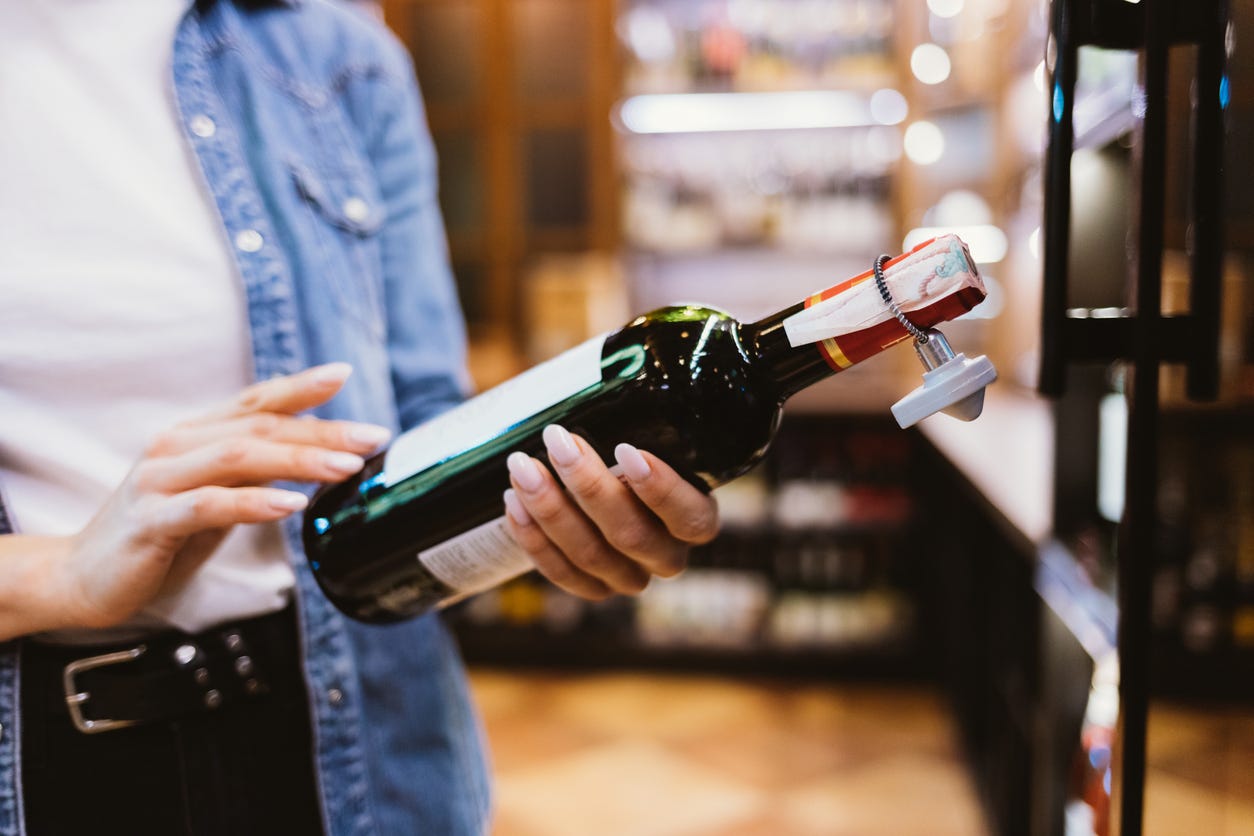What’s on a wine label?
In which we discover that wine labels are much more than just pretty pictures on a bottle.
Wine labels are important. They are the first thing we look at when choosing a bottle of wine and they help us make a quick decision about whether we want to take a closer look. Everything from the name of the wine, the type of lettering used and the design of the label help to give us a quick idea about what the wine may be like.
Lots of curly letters and old-fashioned pictures? We’re probably looking at a wine that’s steeped in tradition and history.
A fun image with a name that makes us smile? We’re clearly dealing with a winemaker who wants to break the mould and give us something new and funky.
Or something simple and elegant with little to distract? Then maybe the producers want to let the wine do the talking.
Whatever you see on a label, you can be certain it’s been put there for a reason.
But beyond the design, labels also contain a wealth of information. And if you take the time to read it, you can probably get a better sense of whether the wine is for you than by merely looking at the pictures.
One of the most important things that a wine label can tell us is where the wine is from. In Spain, you’ll often see the wine’s Denominación de Origen, or D.O. for short – for example, Rioja, or Priorat. In France, it’s called an Appellation – eg Bordeaux. Either way, it tells you where the wine is from. If you know a bit of geography, that already tells you something about the wine. Is the region in a hot southern part of the country? That could indicate the wine is fuller, more fruit forward? Or is it from the cooler north? In which case you might expect something lighter, more mineral perhaps, and a little more refreshing acidity.
Next, you’ll also get information about what’s in the wine – ie the grapes. But before we get more into that, here’s something worth pausing for…
Unplug and Reconnect – A Weekend Retreat in Mallorca (26–28 September)
If you’ve never been on a retreat before, this could be the perfect one to begin with.
Hosted by our friends Paul and Lexy, this is their first ever retreat — and it promises to be something truly special. Two spacious, nourishing days in a 13th-century castle by the sea, filled with calm, clarity, and connection.
It’s a rare opportunity to step away from the hectic pace of daily life and reconnect to what really matters — with nature, with yourself, and with a slower rhythm that you can carry back into everyday life. You’ll pick up simple, meaningful practices to help life feel more grounded and intentional — all in the golden glow of late-September Mallorca, when the island is still warm, but quieter… and the sunsets are unforgettable.
Special for Simply Spanish Wine readers:
We’ve secured 50% off the full rate, available only until 14 July. Spaces are very limited, so don’t hang about.
Find out more here: paulrodwell.com/unplug-to-reconnect-weekend
Or contact Paul directly at paul@paulrodwell.com
Maybe we’ll see you there — it’s a beautiful chance to reconnect with what really matters.
Right, back to wine labels and those all-important grapes…
In France, the appellation may be the only clue you get as to what grapes are used in the wine. But in Spain, they’re a bit more generous and will often list the grapes themselves on the label. That’s really handy information. Want a robust red? Try something with Garnacha or Syrah. Looking for a crisp, fresh white? Try a Chablis, made from the famous Chardonnay grape. Even if you’re not an expert in different grape varieties, it’s still good to know these details. If you try a wine you like, make a note of the grapes on the bottle, so you can look out for more wines made from the same grape another time.
Another useful titbit you’ll find on the label is the producer’s name. It may sound obvious, but knowing who made the wine is an important bit of info. Ideally, you’ll have the name of a small artisanal vineyard clearly labelled so you can, should you choose, go and find out a bit more about the makers. Or you may find that the wine is produced by a large, industrial producer – not necessarily a bad thing depending on what you’re looking for. Or you may discover that the wine is made on behalf of the brand by someone else. That’s quite common these days with more celebrity wines coming out (even, God forbid, from Meghan Markle apparently!). Either way, knowing who made the wine is always useful to know.
Other information we're going to find on the bottle is the size of the bottle. A normal-sized wine bottle is 75 centilitres or 750 millilitres (if you’re lucky enough to be drinking a magnum, it'll be 150 centilitres!). There are several theories about why wine bottles are 75cl, but our favourite is that before wine bottles were made industrially, they were made by hand by glassblowers. And 75 centilitres was more or less the volume of a typical glassblower's lungs. So that was the size that he would generally make a bottle with one single puff.
Something else you're always going to find on a wine label is alcohol content. This is expressed in a percentage and is rounded up. In other words, if a wine is tested in a laboratory and has an alcohol content of 12.37% (for example) that will be rounded up to 12.5%. Which is what it will say on the label.
But don't get too hung up about alcohol! What I mean by that is don't worry too much if you see wines with 14% or even 15% alcohol on the label. Remember wine is made by the naturally occurring sugars in grapes being converted into alcohol. So, it's only natural that in hotter climates, grapes will ripen more and more of the sugars in the grapes will turn into alcohol. So, the potential alcohol level in wines from hotter climates will be that much higher. The winemaker's skill is trying to ensure that alcohol doesn't dominate the wine. So, what he or she is looking for in their wines is perfect balance between alcohol, acidity, sugar, and tannins.
And finally, if you’re lucky, you’ll get some information about how the wine was made. You may read about how long it has been fermented, whether it has had an barrel ageing, whether there have been any special treatments during vinification like carbonic maceration or whole bunch fermentation (more on those in another article), and a general guide to what went on in the winery to get the wine out of a grape and into your hands.
So you see, wine labels are much more than just a pretty picture on a bottle. They can give you lots of useful information to help you decide whether or not the wine is right for you. And even if you end up making a completely random selection, at least if you end up liking the wine you’ll have some good info on the label to help guide your choice next time round.
Cheers!






I have noticed some wine bottle labels have a QR code scan which gives more information such as residual sugar and sometimes % of grape varieties.